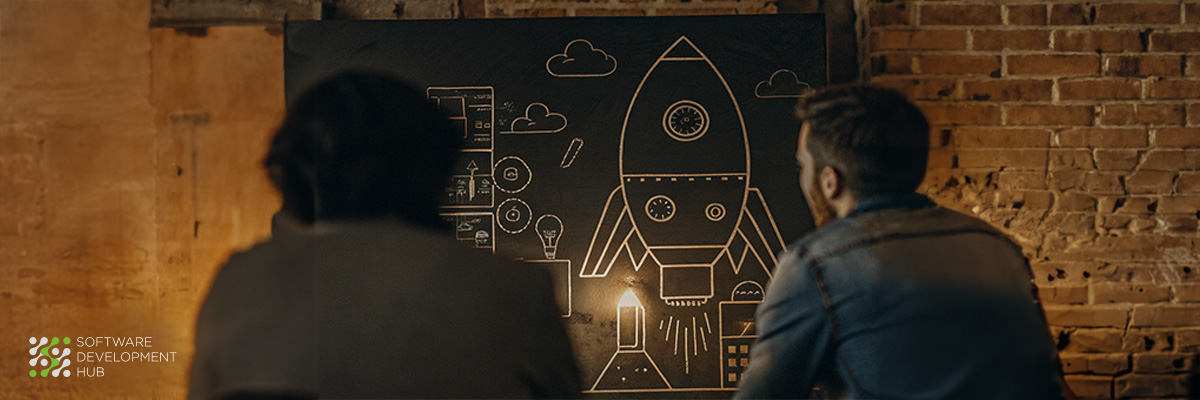VR and AR in Medical Training
Virtual reality technology in medical education is a new opportunity to improve the learning process, which is especially important for medical staff who need to regularly undergo advanced training courses. It is important for medical specialists to operate with the latest knowledge and technologies, since otherwise there is no way to talk about the quality provision of healthcare services.
How Virtual Reality Can Be Applied in Medical Training
Virtual Reality (VR) and Augmented Reality (AR) technologies have been revolutionizing various industries, and one area where they have shown immense potential is in medical training. These immersive technologies offer unique opportunities to enhance the education and training of healthcare professionals, making it more effective, engaging, and realistic.
The Need for VR & AR in Medical Training
Medical training is a complex and demanding process that requires students and professionals to acquire a deep understanding of anatomy, surgical procedures, patient care, and much more. Traditionally, medical training has relied on textbooks, lectures, and, to some extent, hands-on experience. However, there are limitations to these methods.
Limited Hands-On Opportunities. Medical procedures often involve high stakes, and inexperienced students or professionals may not have enough opportunities to practice on real patients.
Expensive Training Equipment. Access to specialized medical equipment for training purposes can be costly and limited in availability.
Patient Safety. Practicing on real patients can pose risks to their safety, and ethical concerns arise when students or inexperienced professionals are involved.
Complex Procedures. Some medical procedures are intricate and require a deep understanding of human anatomy, making it challenging to visualize and learn through traditional methods.
Read also: How AR/VR Is Transforming EdTech Sector
VR & AR Solutions in Medical Training
VR can recreate realistic medical scenarios in a controlled and safe environment. Here's how it can be applied:
- Surgical Training. Surgeons and surgical teams can practice procedures in a virtual operating room, allowing them to refine their skills and techniques before performing surgeries on real patients.
- Anatomy Education. VR can provide a 3D visualization of the human body, allowing medical students to explore anatomical structures in detail, from the circulatory system to individual organs.
- Patient Interaction. Simulated patient encounters in VR enable medical students to develop communication and bedside manner skills without involving real patients.
- Emergency Response Training. VR can replicate emergency situations, such as cardiac arrests or trauma cases, where healthcare professionals can practice their response in a realistic environment.
- Phobia Treatment. VR can help patients overcome phobias, such as the fear of needles or hospitals, by exposing them gradually to their fears in a controlled virtual setting.
AR enhances real-world experiences with digital overlays. Here are some applications in medical training:
- Surgical Assistance. Surgeons can use AR overlays during surgeries to access real-time patient data, visualize internal structures, and follow pre-planned surgical paths.
- Medical Imaging. AR can enhance medical imaging by providing doctors with 3D reconstructions of CT scans or MRIs, improving their ability to diagnose and plan treatments.
- Medical Education. AR can augment textbooks and lectures by providing interactive 3D models and animations that make complex medical concepts more accessible.
Read also: How AI in Healthcare Is Transforming Industry
VR Medical Training Solution Architecture
Implementing VR in medical training requires a well-structured solution architecture. Key components include:
- Hardware: VR headsets, motion controllers, and high-performance computers or VR-ready mobile devices are essential for an immersive experience.
- Software: Custom VR applications and simulations tailored to medical training needs, including realistic scenarios and patient cases.
- Content: High-quality 3D models, textures, and animations of anatomical structures, surgical procedures, and medical equipment.
- Integration: Integration with medical databases, patient records, and real-time data sources for accurate simulations.
- Feedback Systems: Haptic feedback devices and realistic physics simulations to provide trainees with a sense of touch and feedback during procedures.
- Learning Management System: A platform to track and manage trainee progress, assessments, and certifications.
The Tech Stack for VR Medical Training Software
Developing VR for medical training requires a specific tech stack to create immersive and realistic experiences:
- Unity 3D: A popular game engine used to build VR applications, Unity offers a wide range of tools for creating realistic simulations.
- 3D Modeling Software: Tools like Blender, Maya, or ZBrush are used to create detailed 3D models of anatomical structures and medical equipment.
- Programming Languages: C# is commonly used for VR application development in Unity, while C++ may be used for more performance-intensive aspects.
- VR/AR SDKs: Oculus, HTC Vive, and other VR/AR platform SDKs are essential for hardware integration and interaction.
- Real-time Physics Engines: Physics engines like NVIDIA PhysX or Unity's built-in physics engine ensure realistic interactions in the virtual environment.
- Cloud Services: For data storage, scalability, and integration with healthcare databases and patient records.
Augmented and Virtual Reality in Medical Training: Use Cases
- Surgical Simulation
VR can provide aspiring surgeons with a safe environment to practice and refine their skills. Surgical simulations allow trainees to perform procedures with haptic feedback, simulating the feel of real surgery. - Anatomical Education
Understanding the human body is fundamental for healthcare professionals. VR can offer immersive experiences where students can explore the human body in 3D, dissect virtual organs, and understand their functions. - Patient Interaction Training
Effective patient communication is crucial in healthcare. VR scenarios can simulate patient encounters, enabling medical students to practice communication, empathy, and bedside manner. - Emergency Response Training
Healthcare providers can train for critical situations like cardiac arrests or trauma cases in a realistic VR environment. This improves their ability to work under pressure and make quick, informed decisions. - Medical Imaging
AR can enhance medical imaging by overlaying 3D reconstructions of patient scans onto the real world. This aids surgeons in visualizing and planning procedures with precision.
Read also: 3D Medical Metaverse: How will Metaverse Drastically Transform Healthcare Industry?
Improving Revenue Cycle With VR for Medical Education
The adoption of VR and AR in medical training brings not only educational benefits but also potential for revenue generation in the healthcare industry.
Reduced Training Costs. Traditional training methods often involve expensive equipment and resources. VR and AR can significantly reduce these costs by providing virtual alternatives.
Increased Efficiency. Healthcare professionals trained in VR/AR environments may become more proficient, leading to improved patient outcomes and shorter hospital stays, ultimately reducing costs.
Research Opportunities. VR and AR can facilitate medical research by allowing scientists to simulate experiments and test hypotheses in controlled virtual environments.
Attracting Talent. Healthcare institutions that invest in cutting-edge training technologies may attract top-tier talent, enhancing their reputation and ability to provide high-quality care.
Continuing Education. VR and AR can facilitate ongoing training and continuing education for healthcare professionals, ensuring they stay up-to-date with the latest advancements.
Telemedicine. VR/AR can also play a role in telemedicine, enabling remote consultations with specialists and enhancing the patient experience.
Augmented Reality (AR) Is Also Suitable For Medical Training
While VR offers immersive experiences, AR has its own set of advantages in medical training:
Real-World Integration
AR enhances real-world environments with digital information, making it ideal for tasks that require interaction with physical objects and settings
Hands-Free Training
AR headsets like the Microsoft HoloLens allow medical professionals to access information and instructions without needing to use their hands, which can be crucial during surgery.
The company Software Development Hub will help create a training platform for medical personnel using VR/AR. The use of modern tools will speed up the training process of your staff and provide medical services at a high level.
Categories
Share
Need a project estimate?
Drop us a line, and we provide you with a qualified consultation.









